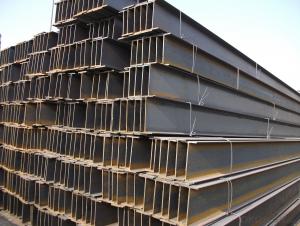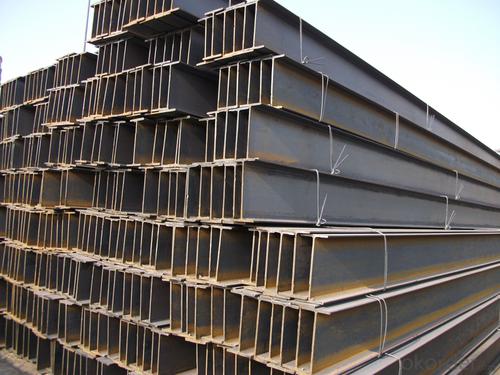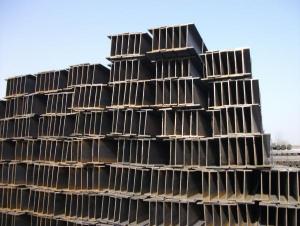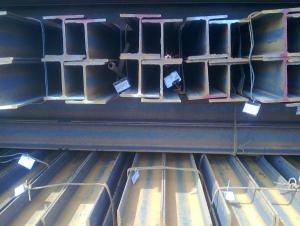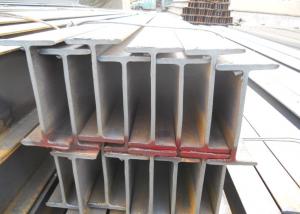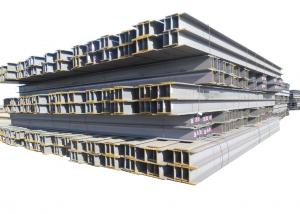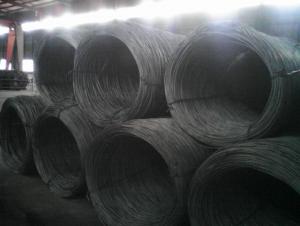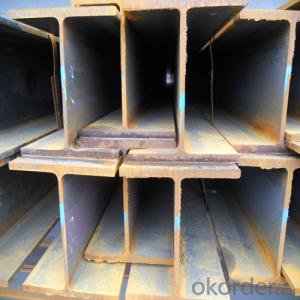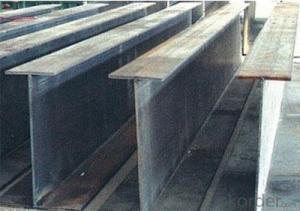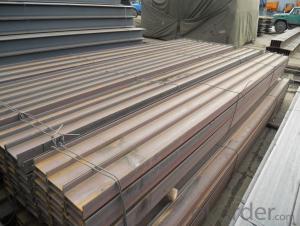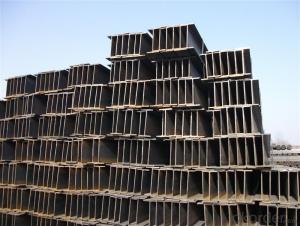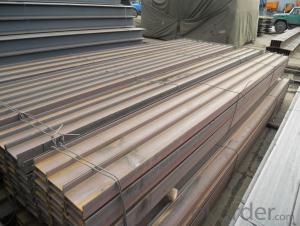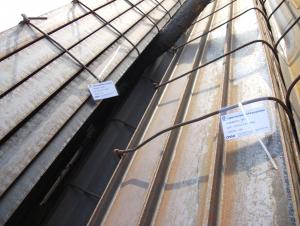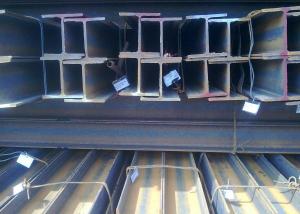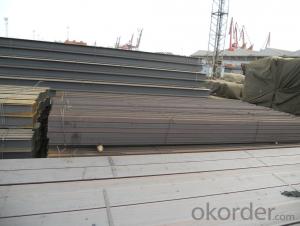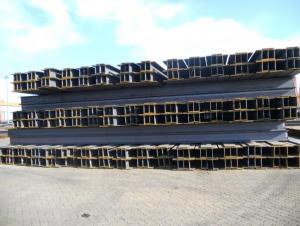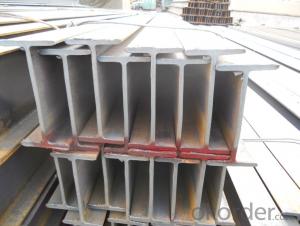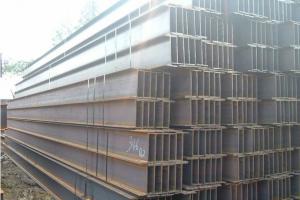Hot Rolled HBeam Steel for Building Structures
- Loading Port:
- Shanghai
- Payment Terms:
- TT OR LC
- Min Order Qty:
- 2000 m.t.
- Supply Capability:
- 10000 m.t./month
OKorder Service Pledge
OKorder Financial Service
You Might Also Like
Product Description:
Specifications of Hot Rolled H-Beam Steel for Building Structures
1. Standard: JIS G3101, SS400(1987),GB700-88, Q235B,EN10034-1993 / EN10025-2004,
HEA100-HEA500,HEB100-HEB500
2. Grade: Q235, SS400 or Equivalent
3. Length: 6m,10m, 12m as following table
4. Invoicing on theoretical weight or actual weight as customer request
5.Payment: TT or L/C
6. Sizes:
SIZE(mm) | DIMENSION (kg/m) |
100*100 | 16.9 |
125*125 | 23.6 |
150*75 | 14 |
150*150 | 31.1 |
148*100 | 20.7 |
198*99 | 17.8 |
200*100 | 20.9 |
248*124 | 25.1 |
250*125 | 29 |
300*150 | 36.7 |
298*149 | 32 |
200*200 | 49.9 |
294*200 | 55.8 |
346*174 | 41.2 |
350*175 | 49.4 |
244*175 | 43.6 |
175*175 | 40.4 |
294*200 | 55.8 |
298*201 | 64.4 |
346*174 | 41.2 |
350*175 | 49.4 |
400*200 | 65.4 |
396*199 | 56.1 |
450*200 | 74.9 |
446*199 | 65.1 |
340*250 | 78.1 |
500*200 | 88.1 |
300*150 | 36.7 |
Usage & Applications of Hot Rolled H-Beam Steel for Building Structures
Commercial building structure ;Pre-engineered buildings; Machinery support structure; Prefabricated structure; Medium scale bridges; Ship-building structure. etc.
Packaging & Delivery of Hot Rolled H-Beam Steel for Building Structures
1. Packing: it is nude packed in bundles by steel wire rod
2. Bundle weight: not more than 3.5MT for bulk vessel; less than 3 MT for container load
3. Marks:
Color marking: There will be color marking on both end of the bundle for the cargo delivered by bulk vessel. That makes it easily to distinguish at the destination port.
Tag mark: there will be tag mark tied up on the bundles. The information usually including supplier logo and name, product name, made in China, shipping marks and other information request by the customer.
If loading by container the marking is not needed, but we will prepare it as customer request.
4. Transportation: the goods are delivered by truck from mill to loading port, the maximum quantity can be loaded is around 40MTs by each truck. If the order quantity cannot reach the full truck loaded, the transportation cost per ton will be little higher than full load.
5. Delivered by container or bulk vessel
Production flow of Hot Rolled H-Beam Steel for Building Structures
Material prepare (billet) —heat up—rough rolling—precision rolling—cooling—packing—storage and transportation
- Q: What are the common inspection methods for steel H-beams?
- The common inspection methods for steel H-beams involve both visual and non-destructive testing techniques. Visual inspection is the initial step in the inspection process, where the surface of the H-beams is examined for any visible defects such as cracks, surface irregularities, or signs of corrosion. Non-destructive testing (NDT) methods are then employed to assess the internal quality of the steel H-beams without causing any damage. These techniques include: 1. Ultrasonic Testing (UT): UT uses high-frequency sound waves to detect internal flaws or defects in the steel H-beams. It is effective in identifying cracks, voids, and inclusions that may compromise the structural integrity of the beams. 2. Magnetic Particle Testing (MT): MT utilizes the principle of magnetic field attraction to identify surface or near-surface defects in the steel H-beams. A magnetic field is applied to the beams, and iron particles are applied on the surface. Any magnetic leakage caused by defects will attract the iron particles, making the defects visible. 3. Dye Penetrant Testing (PT): PT involves the application of a colored liquid dye on the surface of the steel H-beams. The dye penetrates into any surface cracks or defects, and after a specific time, excess dye is removed. A developer is then applied, which draws out the dye from the defects, making them visible for inspection. 4. Radiographic Testing (RT): RT uses X-rays or gamma rays to inspect the internal structure of the steel H-beams. The beams are exposed to radiation, and the resulting image is captured on a film or digital detector. This allows for the detection of internal flaws such as cracks, porosity, or inclusions. These inspection methods are commonly used to ensure the quality and integrity of steel H-beams in various industries, including construction, manufacturing, and infrastructure projects. The combination of visual inspection and NDT techniques provides a comprehensive assessment of the H-beams' condition and helps identify any potential issues before they lead to structural failures.
- Q: Are steel H-beams suitable for mezzanine flooring?
- Steel H-beams are widely used for mezzanine flooring because of their strength, durability, and load-bearing capacity. Mezzanine floors are typically installed in industrial or commercial settings to add more usable space to a building. Steel H-beams offer excellent structural support and can withstand heavy loads, making them suitable for supporting the weight of the mezzanine flooring, as well as any equipment or materials placed on it. Moreover, steel H-beams can be easily customized to meet specific design requirements and seamlessly integrated with other structural elements of the mezzanine system. In summary, steel H-beams are a dependable and practical choice for mezzanine flooring.
- Q: Can steel H-beams be used for supporting railway structures?
- Yes, steel H-beams can be used for supporting railway structures. They are commonly employed in the construction of railway bridges, viaducts, and other elevated structures due to their strength, durability, and ability to withstand heavy loads.
- Q: How do steel H-beams perform in heavy snow loads?
- Due to their exceptional strength and load-bearing capacity, steel H-beams are widely utilized in the construction industry. They excel particularly well in handling heavy snow loads. The H-beam design allows for the even distribution of weight along its length, making it ideal for withstanding the accumulation of snow. The unique shape of the H-beam provides a high moment of inertia, which helps minimize deflection and ensures structural stability in the face of heavy snow loads. Moreover, the high tensile strength of steel H-beams enables them to resist bending and deformation caused by the weight of the snow. This strength guarantees that the beams can endure the pressure exerted by the snow without compromising the integrity of the building or infrastructure. In addition, steel H-beams exhibit remarkable durability and resistance to corrosion, making them suitable for long-term use in areas prone to heavy snowfall. The steel's ability to withstand harsh weather conditions, including extreme cold and moisture, guarantees that the H-beams retain their structural properties even in snowy environments. In summary, steel H-beams are an excellent choice for handling heavy snow loads. Their strength, load-bearing capacity, and durability make them a reliable option for supporting structures under the weight of snow. They provide stability and safety in areas that experience heavy snowfall.
- Q: What are the installation requirements for steel H-beams?
- The installation requirements for steel H-beams typically include ensuring proper alignment, adequate support, and secure connections. It is important to follow manufacturer guidelines and local building codes to determine the appropriate size, spacing, and attachment methods for H-beam installation. Additionally, professional expertise and specialized equipment may be necessary for lifting and positioning the beams accurately.
- Q: Can steel H-beams be used in earthquake-prone areas?
- Yes, steel H-beams can be used in earthquake-prone areas. Steel H-beams are widely recognized for their excellent strength and ductility, which makes them suitable for seismic resistance. The structural properties of steel, such as its ability to absorb and dissipate energy during an earthquake, make it a preferred choice for construction in areas prone to seismic activity. Additionally, steel H-beams can be designed and reinforced to meet specific seismic codes and regulations, ensuring the safety and durability of structures in earthquake-prone regions.
- Q: Can steel H-beams be used in the construction of residential complexes or apartments?
- Steel H-beams are indeed applicable for the construction of residential complexes or apartments. These structural components are known for their strength and versatility, making them a common choice in construction projects. Compared to materials like wood or concrete, steel H-beams offer several advantages. To begin with, steel H-beams possess a high strength-to-weight ratio, enabling them to bear heavy loads while remaining relatively lightweight. This characteristic makes them ideal for the construction of large or multi-story buildings such as residential complexes or apartments. Furthermore, steel H-beams exhibit exceptional durability and resistance to various environmental factors, including earthquakes, hurricanes, and termites. Their high tensile strength allows them to endure significant forces and deformations without breaking. Moreover, steel H-beams can be easily customized to meet specific design requirements. They can be effortlessly cut, welded, and bolted together, facilitating flexible construction designs. A notable aspect of steel is its sustainability and eco-friendliness. It can be recycled indefinitely without compromising its innate properties, making it an environmentally responsible choice for construction projects. In conclusion, steel H-beams offer a multitude of advantages that render them suitable for the construction of residential complexes and apartments. Their strength, durability, versatility, and sustainability make them a favored option among architects and builders in the construction industry.
- Q: What are the different types of steel H-beam connections for blast-resistant buildings?
- There are various types of steel H-beam connections used in blast-resistant buildings, including bolted connections, welded connections, and hybrid connections. Bolted connections involve using bolts to connect the H-beams together, providing flexibility and ease of installation. Welded connections involve welding the H-beams together, offering greater strength and rigidity. Hybrid connections combine both bolted and welded connections, utilizing the advantages of both methods. The choice of connection type depends on factors such as the level of blast resistance required, structural design considerations, and construction feasibility.
- Q: Can steel H-beams be used for supporting oil or gas pipelines?
- Yes, steel H-beams can be used for supporting oil or gas pipelines. Steel H-beams are commonly used in the construction industry for their structural strength and stability. They can provide the necessary support and load-bearing capacity required for pipelines, ensuring their stability and preventing any structural failures.
- Q: What are the different methods of installing steel H-beams?
- Installing steel H-beams can be done using various methods, depending on the project requirements and available resources. Below are some commonly used techniques: 1. The first method involves the use of heavy machinery like cranes or forklifts to lift and position the steel H-beams. This approach is typically employed for larger structures or when installing beams at significant heights. 2. Welding is another common technique used to connect steel H-beams either to each other or to other structural elements. It requires melting and fusing the metal to create a strong joint. Welding can be carried out on-site or in a fabrication shop, depending on the project's needs. 3. Bolting is a method where bolts and nuts are used to secure the steel H-beams together or to other structural components. Bolting is often favored in situations where future disassembly or modifications may be necessary. 4. Concrete embedment is employed when additional stability and support are required. Steel H-beams are embedded in concrete by creating holes in the concrete structure and placing the beams into them. The beams are then held in place as the concrete sets. 5. Steel plates and brackets can also be utilized to connect steel H-beams to other structural elements. These plates are typically attached to the beams through bolting or welding and then affixed to the desired location. It is crucial to consider factors such as project requirements, structural design, and available resources when choosing the appropriate method for installing steel H-beams. Seeking advice from a structural engineer or construction professional is highly recommended for determining the most suitable installation approach for a specific project.
Send your message to us
Hot Rolled HBeam Steel for Building Structures
- Loading Port:
- Shanghai
- Payment Terms:
- TT OR LC
- Min Order Qty:
- 2000 m.t.
- Supply Capability:
- 10000 m.t./month
OKorder Service Pledge
OKorder Financial Service
Similar products
Hot products
Hot Searches
Related keywords
